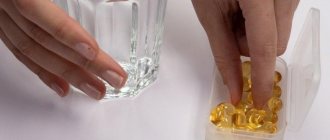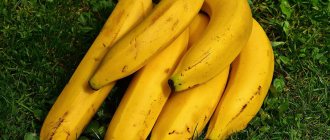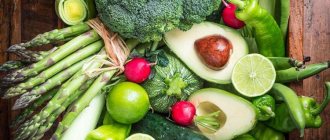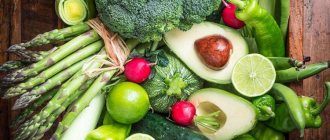Fluorine (F) is widely known in the forms of calcium fluoride, stannous fluoride, sodium monofluorophosphate, sodium fluoride. It is one of the most active elements of the halogen group, which also includes bromine, chlorine and iodine. It does not occur in nature as a simple substance, and a liter of natural water contains from 3 to 12 mg of fluoride. In the human body it is also present in combinations with other components.
Functions of fluoride in the body
Fluoride is present in almost all tissues of the human body, but the highest concentration of the substance (almost 96%) is found in teeth and bones. Fluorides entering the body with food are completely ionized and quickly absorbed, distributed between cells.
The substance is absorbed in the intestines and transported throughout the body through the bloodstream. Quite quickly eliminated from the body in urine. Fluoride increases the bioavailability of calcium and reduces the aggressiveness of acids in the oral cavity. Necessary for normal bone mineralization and formation of tooth enamel. Fluoride and calcium are closely related within the human body and work primarily in tandem, often in the outer parts of the bones.
a lack of
It is important to consume foods containing fluoride in sufficient quantities. Deficiency does not lead to significant symptoms, so people usually do not consult a doctor. The disadvantage results:
- to destruction of bone tissue;
- high sensitivity of teeth;
- fragility, brittleness of nails;
- hair loss, split ends;
- anemia;
- osteoporosis;
- curvature of the spine;
- periodontal disease;
- caries;
- deterioration of vision.
Therefore, you should adhere to the measure. If there is a shortage of a component, the doctor may prescribe medications. It is important to complete the entire course of treatment.
Fluoride deficiency and overdose
The generally accepted daily dose of F for an adult is 1.5-2 mg (slightly more for osteoporosis). Insufficient consumption of this microelement causes caries, impairs vision, and increases the body's vulnerability to infections. Consequences of chronic F deficiency:
- tooth decay;
- rachiocampsis;
- blurred vision.
Content:
- Functions of fluoride in the body
- Fluoride deficiency and overdose
- Food sources
- Top 10 products necessary for children
- Other gastronomic recommendations
- Toxic sources
Fluoride overdose, although rare, does occur. In case of mineral poisoning, it is important to drink a lot of water (more than 2 liters per day) and take calcium gluconate (promotes faster removal of fluoride from the body). Laxatives containing sodium sulfate provide a quick effect for cleansing of excess trace elements. Teeth enamel whitening will help get rid of fluorosis.
What's the best way to use it?
Many experts recommend drinking green tea and getting this microelement with it, but it has many contraindications. Plus, it's a dehydrating drink.
Heat treatment is harmful to volatile fluorine, and tea that is brewed with boiling water is not a living product. This feature of the component of interest should be taken into account when preparing food.
It is advisable to consume the sources in their original form – raw. Do not put them in aluminum dishes, which leads to loss of fluoride. In addition, large amounts of calcium, phosphorus, and magnesium complicate the absorption of fluoride.
Food sources
Fluoride contains: asparagus, avocado, Brussels sprouts, carrots, cumin, cauliflower, cucumbers, dates, lemongrass, parsley, turnips, beet tops, dandelions, sunflower seeds, garlic, spinach, tomatoes, green leafy vegetables, nuts (especially almonds) , turnip, seaweed.
By the way, it is interesting that fluorine has the ability to “migrate” into water, which is especially useful for decoctions and teas.
For example, when black tea is brewed, approximately 70-90 percent of the fluoride passes from the leaves into the liquid. Approximately 30% of the mineral contained in mint is released, approximately 20 percent is released from rose hips, and chamomile provides only 5% of the useful microelement. Table of fluoride content in some products
| Product (200 g) | Fluoride (mg) |
| Tea (black, green, white) | 20 |
| Mackerel | 3 |
| Tuna | 2 |
| Mineral water | 1,5 |
| Hake | 1,4 |
| Pollock | 1,4 |
| Cod | 1,4 |
| Blue whiting | 1,4 |
| Walnuts | 1,3 |
| Horse mackerel | 1 |
| Flounder | 0,9 |
| Sea bream | 0,86 |
| Mackerel | 0,86 |
| Salmon | 0,86 |
| Trout | 0,86 |
| Cancer | 0,86 |
| Scallops | 0,86 |
| Oysters | 0,86 |
| Mullet | 0,86 |
| Lamb meat | 0,3 |
| Pork | 0,3 |
| Bird | 0,28 |
| Chicken eggs | 0,18 |
| Buckwheat | 0,1 |
| Semolina | 0,1 |
| Milk | 0,1 |
| Potato | 0,1 |
| Pasta | 0,1 |
| Beef meat | 0,032 |
| Radish | 0,012 |
| Carrot | 0,006 |
Daily norm
It is difficult to establish the boundary between excess and deficiency of a component. There is very little fluoride in products, so an overdose is not dangerous.
The body of an adult weighing up to 70 kg contains about 2-3 g of fluoride. Its norm per day is 0.5-4 mg and depends on age, weight, energy consumption, region, and nutrition. For example, for children 6-9 years old, 1.1 mg is required, for adolescents 14-18 – 1.5, and after 18 years – 1.7-4.
Pregnant women and people who are engaged in physical labor require 2 mg of the mineral every day. With osteoporosis, the norm increases.
Top 10 products necessary for children
There is no need to remind children about the importance of fluoride. A growing body, like no other, needs this microelement to form healthy bones and teeth, strengthen enamel and prevent dental diseases.
Fluoride deficiency, like calcium, is fraught with serious problems in the development of children: from curvatures in the spine to loss of vision.
But this does not mean that a child from an early age must be fed with dietary supplements containing F. The sources of nutrients for children should be only natural products. An excess of the mineral is also not the most pleasant thing that can happen to a person. Consumption of more than 0.5 mg of fluoride per 1 kg of a child’s weight causes fluorosis (manifested by white and dark spots on tooth enamel). A large overdose causes aching pain in the bones, stains on the teeth (white and brown). The same signs of fluoride poisoning can occur in adults. But in addition to everything else, they also have nodular joints, rapid aging of bone tissue, the appearance of wrinkles and the development of scleroderma (the formation of hard patches of skin).
When compiling a list of foods rich in fluoride, it is first important to remember water, which is the best source of the mineral. It is also important to introduce tea, nuts, sunflower seeds, fruits and vegetables into the children's diet. In particular, focusing on carrots, turnips, beet tops, garlic, spinach, and leafy greens.
Best sources of fluoride for children:
- Tea. This product can be introduced into the diet of children from a relatively early age.
- Pickles. A pickled cucumber added to a salad will provide your child with a significant portion of fluoride.
- Grape juice. This drink, beloved by many, will also take care of the required amount of F in the child’s body. Of course, we are talking exclusively about healthy juices, without preservatives and chemical additives.
- Spinach. This, as well as other green leafy vegetables, will give the child strength and will serve as a source of not only fluoride, but also most of the micro- and macroelements and vitamins necessary for a growing body.
- Tomatoes. All foods that contain tomatoes contain fluoride. Salad or tomato juice is exactly what children need.
- Carrot. Cooked without salt, but with a small addition of vegetable oil, it is a nutritious side dish or salad for a snack. It is important that this orange vegetable is also a powerful source of carotene, which is responsible for visual acuity and the proper functioning of internal organs.
- Orange juice. It's hard to find a child who doesn't like this sweet and sour vitamin drink. If you don’t have a food allergy to citrus fruits, you can pamper your children with fresh orange juice at least several times a week and be sure that they have received many essential nutrients, including vitamin C, a well-known antioxidant and immune protector.
- Asparagus. Serve whole, cut into pieces or puree. It doesn’t matter in what form, the main thing is that the child eats a portion of this healthy vegetable, rich not only in fluoride.
- Beet. Borscht, salads, juices... Prepare whatever your imagination allows from this vegetable. And as often as possible. Beets are a real storehouse of vitamins and minerals that are vital for people at any age.
- Prunes. It can be eaten whole, in compotes, or as an ingredient in desserts - in any case, it will benefit the body.
Important note. Children, especially at an early age (up to 2 years), are often prone to food allergies. Therefore, you should introduce any of these products into your diet slowly, carefully and in small portions. Only after the body gets used to the new food and portion can the frequency of taking a particular product be increased. Don't neglect this rule! Any product should provide benefits and not cause health problems.
Sentence
So, the idea about the dangers of fluoride came to us from the West. There it really has some basis. After all, let’s say, in the United States the level of water fluoridation is already quite high and sometimes reaches 4 milligrams per liter. And this is a lot, since the recommended content is no more than 1.5 mg/l. It is quite understandable that excess fluoride, which can be obtained, for example, from toothpaste, raises fair concerns. Chronic fluoride intoxication is possible only in industrial production conditions and does not threaten the average person.
What do we have? As was said, fluoridation has not been carried out in our country since 1990. Therefore, we see no reason to fear fluorine like fire.
It should only be taken into account that there are areas where the groundwater itself is rich in this substance, and there are those where it is poor in it. Once you understand how much fluoride you consume in food and water, you will understand whether you should limit its content in toothpaste, rinses and similar hygiene products, because, despite the approval of fluoride by dentists, exceeding the recommended dose can lead to negative consequences. But this can be said about almost everything we ingest, right?
Other gastronomic recommendations
Coming up with a fluoride-rich menu won’t be difficult at all. The main thing is to know which products contain this mineral and in what concentration.
All soups cooked with bones and poultry broths (meat should also have bones) are not only a filling dish, but also an extremely concentrated source of F. There is one caveat, though. If you want to be sure of the benefits of such broth, take care of the quality of the meat. And if it is not possible to eat poultry, then at least buy a product from trusted manufacturers.
Of course, freshly prepared food is the tastiest and healthiest. But canned food is not always bad. Fish, for example (especially with bones) are one of the best food sources of F. But in this case, it is also important to check the quality and freshness of the product.
Categorically do not accept canned food? No problem. Fish cooked yourself is no worse. And the taste is many times better. The only rule: boil, stew, bake or fry fish, preferably with bones. This product contains many times more fluoride than fillets of the same varieties. Continuing the theme of seafood, it is worth recalling that shellfish also have a beneficial effect on the condition of bones and teeth.
Oatmeal belongs to the list of foods rich in microelements, in particular fluoride. But a small warning. Still, it is better to give preference to ordinary “rolled oatmeal” flakes than to newfangled instant cereals, stuffed with flavor enhancers and chemical “E” additives. In this regard, lovers of sprouted grains are lucky - they get the most benefits from cereals.
Fruit and vegetable juices are among the foods rich in fluoride. But again, only freshly squeezed juices from quality products can be called healthy. Chemically grown products should not be chosen as raw materials for a vitamin drink. Such juices do more harm than good. And of course, it’s better to forget forever about the existence of drinks made from concentrates.
Where is it present?
One third of the component comes from food, so foods containing fluoride are healthy. But most of it comes with water. Since the natural trace element is present in a bound state, its concentration in living organisms is very small. The exceptions are tea and sea fish.
Most of the component is lost during cooking. If food is cooked in aluminum cookware, it reacts with the material and is removed from the food. It is not possible to compensate for the lack of fluoride with a monotonous diet, so doctors do not prescribe a diet, but fluoride-containing products. Which products contain the most fluoride will be discussed below.
Excess
Fluoride in food can compensate for the deficiency only with moderate consumption. But the component is poisonous if more than 20 mg is supplied. Overdose is considered dangerous. Excess results in:
- to slow growth, cessation of cell division;
- general weakness;
- drowsiness;
- nausea;
- skin rash;
- complete loss of voice;
- convulsions;
- trembling fingers;
- bleeding gums;
- inhibition of the activity of the kidneys, liver, and thyroid gland.
Difficulty breathing and decreased blood pressure also occur. The bones will be rough, leading to muscle and joint pain. Fluoride poisoning causes conjunctivitis, tearing, pneumonia, bronchial and skin irritation, severe abdominal pain, and diarrhea.
With an excess of fluoride, fluorosis can occur - a disease in which gray-brown spots appear on the enamel, joint deformation, and bone tissue destruction. Wrinkles and white, hard areas form on the skin. Fluorosis appears in the presence of 0.5 mg of fluoride per 1 kg of weight.
Signs of overdose appear gradually, so if you feel slightly unwell, you should visit a doctor. If medical assistance is not timely, treatment will be delayed for a long time.
To eliminate excess fluoride ions, you should eat foods rich in calcium, and also take medications (calcium gluconate), laxatives (sodium sulfate). Products containing magnesium prevent the absorption of the mineral.
If poisoning occurs with this component, induce vomiting and rinse the stomach.










